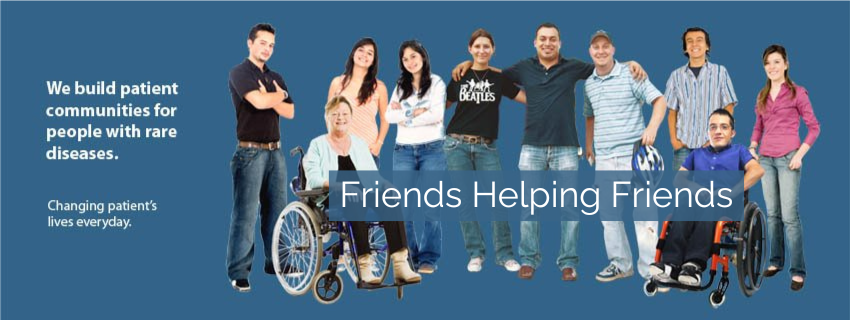
Telling Your Story: A Guide for Ben’s Friends Fundraisers
Your personal story is your most powerful way to connect with potential donors and inspire them to support you and Ben’s Friends. This section provides guidance on how to share your experience with Ben’s Friends in a way that resonates with potential donors. Learn how to structure your narrative, highlight key moments, and connect your story to the broader mission of supporting rare disease communities. We’ll help you craft a compelling story that illustrates the real-world impact of Ben’s Friends and motivates others to contribute to our cause.
Here are some overall tips for sharing your story:
- Be authentic: Share your genuine experiences and emotions.
- Highlight the impact: Explain how Ben’s Friends has helped you or someone you care about.
- Connect to the mission: Show how your story relates to Ben’s Friends’ goal of supporting those with rare diseases.
- Keep it concise: Aim for a brief, impactful narrative that’s easy to read.
- Include a call to action: Encourage readers to donate or share your fundraising page.
Remember, your story can inspire others to support our communities and help ensure that no one faces a rare disease alone. By sharing your experience, you’re not just raising funds – you’re raising awareness and fostering understanding about rare diseases.
Your story matters, and it can make a real difference in the lives of those affected by rare diseases. Thank you for being part of the Ben’s Friends family and for your dedication to helping others.
Below you will find two sections
Different Platforms To Tell Your Story
Sharing your personal experience with Ben’s Friends and rare diseases can be powerful and inspiring. Here are several ways to tell your story, along with tips for each method:
Written Story
- Start with a brief introduction about yourself and your condition
- Describe your journey, including challenges and triumphs
- Use clear, concise language
- Include specific details to make your story relatable
- End with how Ben’s Friends has impacted your life
Tips:
- Write in a conversational tone
- Use shorter paragraphs to break up your text
- Consider including a photo of yourself
- Written stories can be shared via email or posted on your fundraising page
Blog Post or Article
- Write a longer-form piece (500-1000 words) about your experience
- Include background information about your rare disease
- Describe how Ben’s Friends has helped you
Tips:
- Use subheadings to organize your content
- Include links to relevant resources
- Consider adding a call-to-action (e.g., join Ben’s Friends, donate)
Video Story
- Create a short (2-3 minute) video sharing your experience
- Speak directly to the camera as if talking to a friend
- Include visuals that help illustrate your story (e.g., photos, medical devices)
Tips:
- Find a quiet location with good lighting
- Use a tripod or stable surface for your camera/phone
- Practice what you’ll say before recording
- Don’t worry about being perfect! It is way more important to be authentic and share from your heart.
In-Person Storytelling
- Prepare a 5-10 minute talk about your experience
- Use a clear structure: introduction, main points, conclusion
- Include personal anecdotes to engage your audience
Tips:
- Practice your story with friends or family
- Use eye contact and natural gestures
- Speak slowly and clearly
- Be prepared for questions afterward
Social Media Series
- Create a series of posts telling your story over time
- Use a mix of text, images, and short videos
- Encourage engagement by asking questions or using polls
Tips:
- Use relevant hashtags (e.g., #RareDiseaseAwareness, #BensFriends)
- Be consistent with your posting schedule
- Interact with those who comment on your posts
Remember, no matter which method you choose, the most important thing is to be authentic and share from the heart. Your story has the power to inspire, educate, and connect with others facing similar challenges.
Example Story Structure
- Introduction: Briefly introduce yourself and your connection to Ben’s Friends.
- The Diagnosis: Describe the moment you or a loved one was diagnosed with a rare disease. Share the emotions and challenges you faced.
- Finding Ben’s Friends: Explain how you discovered Ben’s Friends and what it meant to find a supportive community.
- The Impact: Detail how Ben’s Friends has positively impacted your life or the life of your loved one. This could include:
- Connecting with others who understand your experience
- Access to valuable information about your condition
- Emotional support during difficult times
- Why You’re Fundraising: Explain why you’ve chosen to fundraise for Ben’s Friends. This could include:
- Wanting to give back to the community that helped you
- Helping Ben’s Friends support more people with rare diseases
- Raising awareness about rare diseases and the importance of community support
- The Ask: Clearly state how donors can help and what their donations will achieve. For example:
- $12 helps moderate an online community for one month, ensuring a welcoming environment for thousands of members.
- $30 provides a platform and hosting for a community for one month, offering a lifeline to thousands who feel isolated by their rare disease.
- $80 supports an entire patient community for one month, providing ongoing support, information, and hope, ensuring that thousands of patients never have to face their rare disease journey alone.
- Conclusion: Thank potential donors for their time and support, emphasizing how their contribution will make a real difference in the lives of those affected by rare diseases.
Contact / Help
Need assistance with your fundraising or have questions? Check the FAQ below for quick answers, or reach out at info@bensfriends.org.

